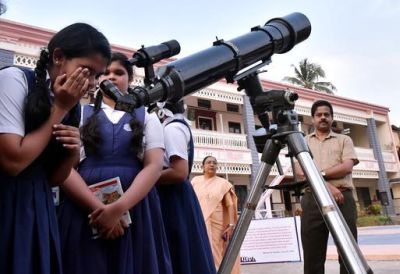Spectacles in the sky
- POSTED ON: 9 Mar, 2019
- TOTAL VIEWS: 895 Views
- POSTED BY: Archana Subramanian
- ARTICLE POINTS: 100 Points
March brings longer days for the Northern Hemisphere, especially by the time of the equinox. Early risers are treated to the majority of the bright planets dancing in the morning skies, with the moon passing between them at the beginning and end of the month.
Venus is always brilliant, and shining with a steady, silvery light. It will be visible in the mornings in the eastern sky at dawn. The planet will look like a fat crescent moon when seen through a telescope.

Before you take a look at this month’s timeline to know what else is in store for sky-watchers, here are some terms you may want to get familiar with if you are keen on observing the skies this month
Supermoon: It looks bigger than an average Full Moon, and happens when a Full or New Moon is near the moon’s closest approach to the earth. The early Native American tribes called it the Full Worm Moon because this was the time of year when the ground would soften, allowing earthworms to reappear. This moon has also been known as the Full Crow Moon, Full Crust Moon, Full Sap Moon, and the Lenten Moon.
Equinox: It means “equal night”, and the perfect balance between day and night occurs because of the distance and angles between the sun and the earth. The sun shines equally on the Northern and Southern Hemispheres, which is why the March and September equinoxes are the only times of the year when the north and south poles receive sunlight simultaneously.
Comet Taylor: Comet Taylor was first sighted in 1915 and is a periodic comet with an orbital period of approximately seven years.